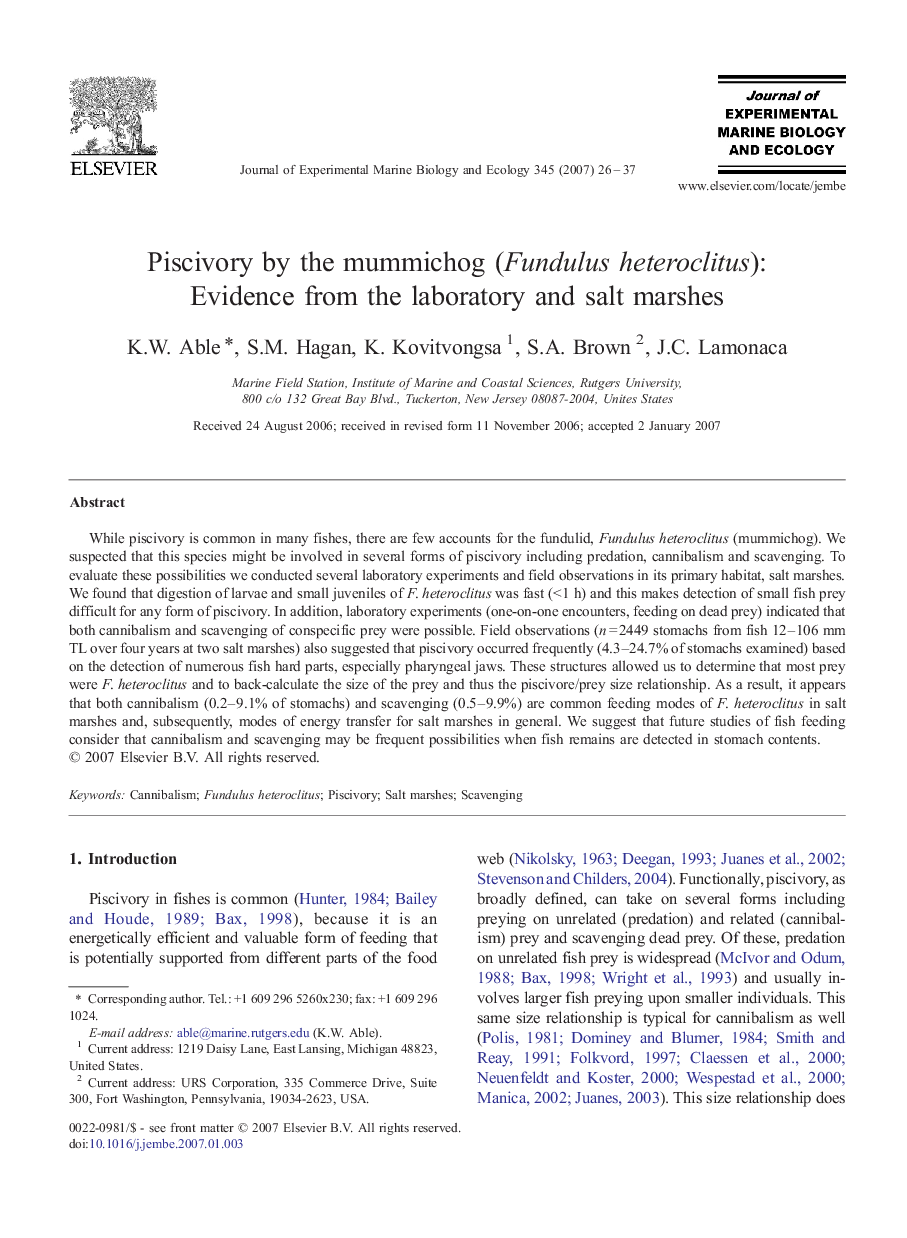| Article ID | Journal | Published Year | Pages | File Type |
|---|---|---|---|---|
| 4397721 | Journal of Experimental Marine Biology and Ecology | 2007 | 12 Pages |
While piscivory is common in many fishes, there are few accounts for the fundulid, Fundulus heteroclitus (mummichog). We suspected that this species might be involved in several forms of piscivory including predation, cannibalism and scavenging. To evaluate these possibilities we conducted several laboratory experiments and field observations in its primary habitat, salt marshes. We found that digestion of larvae and small juveniles of F. heteroclitus was fast (< 1 h) and this makes detection of small fish prey difficult for any form of piscivory. In addition, laboratory experiments (one-on-one encounters, feeding on dead prey) indicated that both cannibalism and scavenging of conspecific prey were possible. Field observations (n = 2449 stomachs from fish 12–106 mm TL over four years at two salt marshes) also suggested that piscivory occurred frequently (4.3–24.7% of stomachs examined) based on the detection of numerous fish hard parts, especially pharyngeal jaws. These structures allowed us to determine that most prey were F. heteroclitus and to back-calculate the size of the prey and thus the piscivore/prey size relationship. As a result, it appears that both cannibalism (0.2–9.1% of stomachs) and scavenging (0.5–9.9%) are common feeding modes of F. heteroclitus in salt marshes and, subsequently, modes of energy transfer for salt marshes in general. We suggest that future studies of fish feeding consider that cannibalism and scavenging may be frequent possibilities when fish remains are detected in stomach contents.
